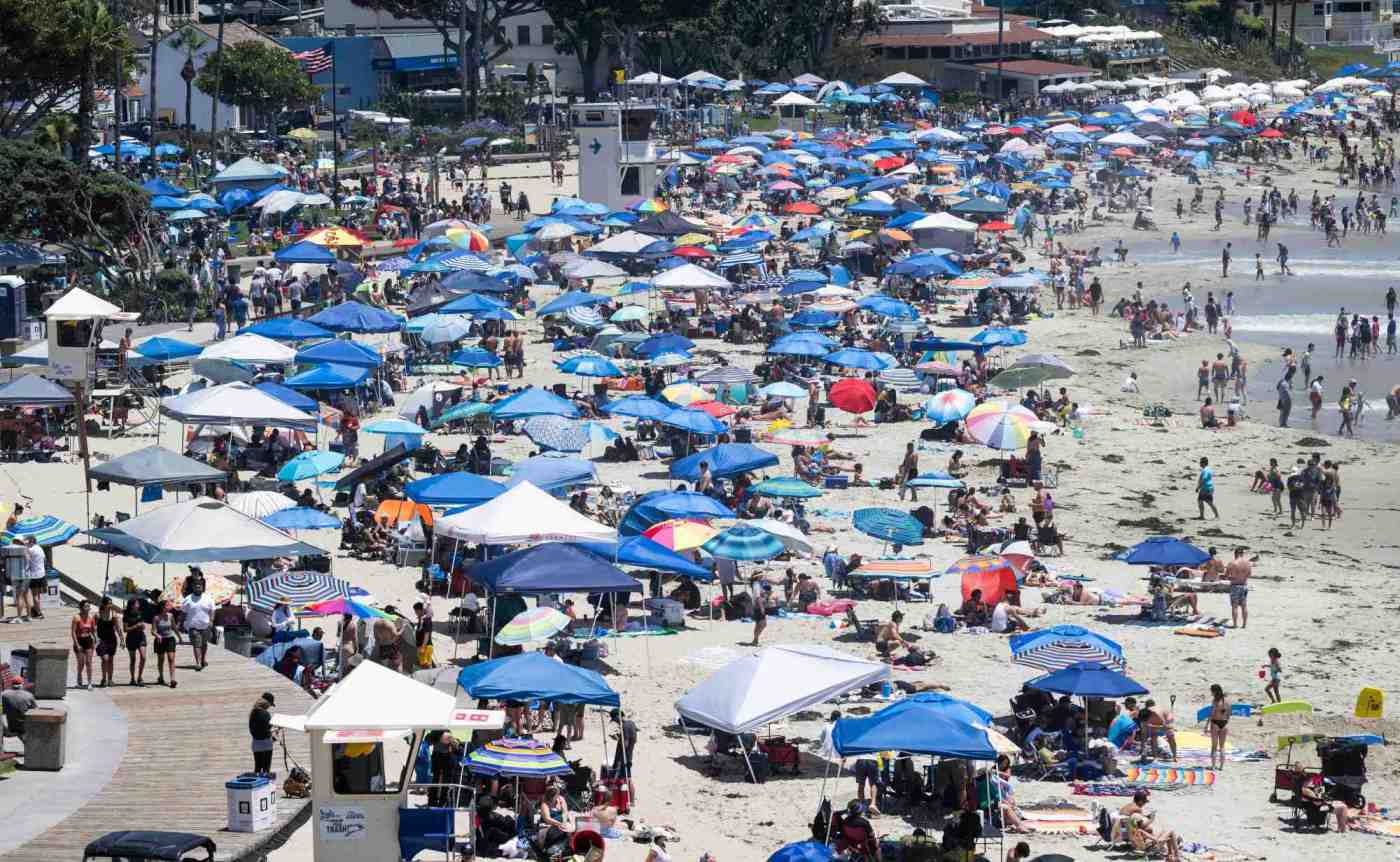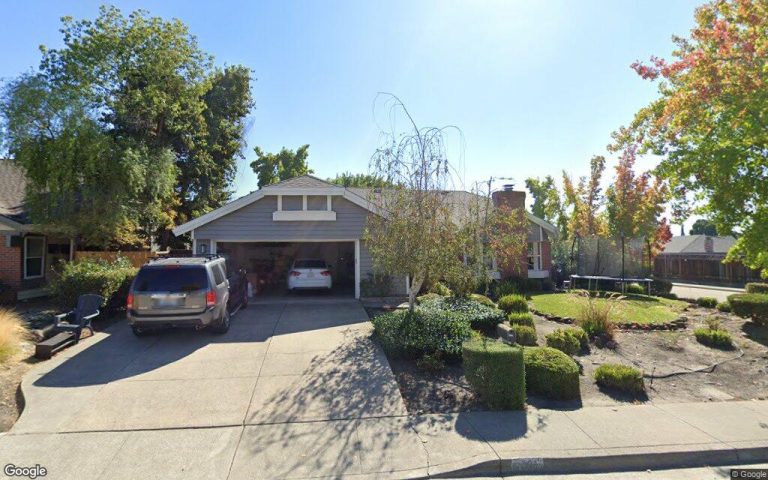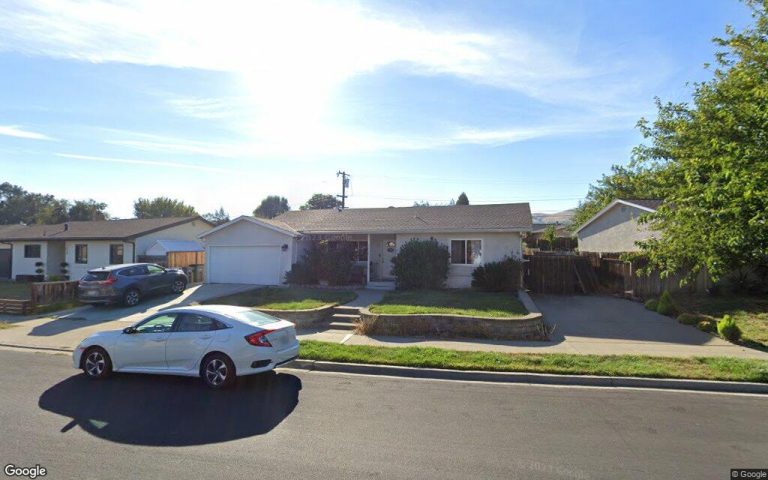There’s no arguing California’s beaches are the state’s prize amenity – a place millions of vacationers and residents visit year-round, fueling tourism and generating tax revenue, a place where an ocean economy thrives with jobs that depend on a healthy coastal environment.
But how much is at risk if beaches continue to erode away? And how much money are lawmakers, residents and tourists willing to spend to ensure the valuable coastline doesn’t disappear?
A group gathered at the UC Irvine one recent day to discuss the “Business of Beaches,” drawing politicians, planners, educators and economic experts to brainstorm ideas to tackle a problem — the shrinking supply of sand that makes up much of the region’s beaches — that could have a domino of disastrous impacts.
“If we don’t have beaches, if they are eroded, we don’t have a local economy,” said Assemblymember Diane Dixon, who helped spearhead the discussion. “We do not have the hospitality industry, we don’t have the business industry that depends on our beaches.”
California has 437 beaches and 631 miles of beach fronts, with an estimated 150 million day visits generated by tourists and residents, said Martin Wilson, executive vice president for public affairs with the California Chamber of Commerce
“Obviously, we need sand, we need nice wide sandy beaches — places where people can have fun playing, walking their dogs,” he said. When people visit the beach, only half actually go in the water.
Beaches accounted for $30.1 billion in visitor spending in 2023, Wilson said. In Orange County alone, tourism spending in 2023 was about $15.8 billion. Though Anaheim and its Disneyland Resort area were also big contributors, it was largely the coastal areas that drove the tourism, he said.
An estimated 132,000 jobs are linked to tourism in Orange County, he noted. “I think that’s a very compelling statistic when you think about what you need to do to preserve the beaches and combat erosion.”
Fifth District Supervisor Katrina Foley, who is active with the county’s efforts to get sand on area beaches, laid out more economic impacts of the region’s beaches.
Orange County’s GDP from the coastal economy is estimated at $4.3 billion, including 50,000 jobs, making it the 11th strongest ocean economy in the nation, third in the state, she said.
“Shoring up coastal resiliency ensures increased tourism, greater access to natural resources and continued state and county revenue,” she said.
There’s also an estimated $584 million in revenue from sales tax, much of it coming from travel spending by visitors, Wilson noted.
San Clemente officials are proposing a ballot measure for a 1-cent city sales tax in November, in part to help fund adding sand to its shrinking beaches, bolstering the city’s coffers with an estimated $15 million a year.
Already, the tab to keep beaches sandy is in the tens of millions.
The US Army Corps of Engineers led two major sand projects this year, one in Surfside Beach in north Orange County and the other in San Clemente, with a combined price tag of upward $40 million.
San Clemente also recently approved spending about $2 million to truck in sand from the Santa Ana River to the north end of town.
Efforts by the Orange County Transportation Authority to protect its coastal-running rail line through south Orange County with a mix of boulders, walls and sand replenishment are estimated to cost $340 million — anywhere from $64 million to $145 million just for the sand portion.
If the beaches don’t have sand, there’s a trickle-down impact on the economy, said Assemblywoman Laurie Davies, whose region covers south Orange County and north San Diego beaches.
“If we don’t have beaches, we don’t have TOT (Transient Occupancy Tax) taxes, retail – that means our cities don’t have money for infrastructure, public safety,” Davies said. “And if they don’t have funding, that means they are going to the state to get funding.”
But can the source of the problem be fixed, so the tab doesn’t keep tallying up?
While there’s much talk about climate change and the role sea level rise will have in threatening the coastline, the problem is rooted in poor infrastructure design dating back decades — and it can be fixed, according to Brett Sanders, professor of civil and environmental engineering, urban planning and public policy at UC Irvine.
Sanders gave the group a quick history lesson: A New Year’s flood in 1933, following wildfires that scorched the region, killed hundreds of people.
In an attempt to control water flow during torrential downpours, concrete channels were created throughout the region so water would rush straight down to the ocean; dams were built to control the flow.
While that solved the flooding problem, it created others.
Sand that would naturally wash from inland areas gets stuck, instead of heading to the coast to replenish beaches. So many of the dams and reservoirs designed to hold groundwater get filled with sand and sediment, “a free supply of sand” that would otherwise naturally make its way to the coast.
Governments are spending millions on dredging projects, trucking sand in, and grappling with how to keep their valuable beaches sandy, he said.
“Our beach erosion problem today is all of our making…we have an enormous capacity to solve this problem by rethinking and reengineering our water infrastructure,” Sanders said. “The sustainable solution to solve this problem is to have rivers that naturally supply sand to the coast.”
Free sand – but at what cost?
Related Articles
Where to find California’s most gorgeous, loneliest beaches
Rainbow Sandals turns 50: Celebrating a flip flop with soul
Dispatch from ‘the stinkiest beach in California
East Bay teen stuck in mud during rising tide rescued by police, firefighters
Slab of cliff at Capitola beach crumbles into sea
The Orange County Water District folks understand the problem: They have too much sand in the Prado Dam now.
They want to give it away, for free. In fact, they must figure out how to remove it, so it doesn’t take up space needed for groundwater supply and to comply with regulatory requirements.
The grain size and quality makes for perfect beach sand. The problem is, it’s expensive to transport.
Sand is a valuable commodity; a private entity has already offered to come and scoop it all up, for free, using its own equipment and supplies.
“Our preference would be to get it to coastal communities that need it, but no one can afford to get it to them,” Lisa Haney, OCWD executive director of planning and natural resources, told the gathered leaders. “So my message to you is to help us fund this — we have the sediment, help us get it to people who need it.”
One big pile of about 125,000 cubic yards of sediment needs to be removed soon, which would cost an estimated $10 million. And the OCWD has more sand stockpiled from over the years.
“Who wants it? We have lots of people in this room who want that sediment and we want to get rid of it,” Haney said at the meeting. “I think we’re a perfect partnership for each other.”
The Prado Dam is located in Corona, about 30 miles from the coast. It has a rail line that runs alongside it, which goes straight to south Orange County beaches, but challenges still exist, such as no loading or unloading equipment at either location.
“There are infrastructure costs that I think if you came together and funded, we can definitely do,” she said. “I don’t think insurmountable, I think that’s why we are in the room, just to show the solutions and then figure out how to make them come true.”
Transporting sand by truck would cost an estimated $40 million to $60 million per year to haul out the estimated 600,000 cubic yards that flows in annually, Haney said.
“We just have no way to get it out. And no way to pay for this infrastructure cost,” she said. “We really need appropriation funding, grant funding, cost sharing.”
In the meantime, the OCWD has adopted the use of an app created by the San Francisco Estuary Institute called “SediMatch,” which Haney likened to a sand dating app.
Beach towns with eroding beaches can input how much sand they need. Groups, such as the OCWD, can input how much excess sand supply they have available.
“It’s the travel distance, and the cost of that, that is really the barrier,” Haney said, noting that if a closer “match” is found, costs go down.
Funding challenges to transport sand remain, it’s time to get innovative to find solutions, she said.
“Let’s not do the same things because we know it’s not working, we need to get back to these nature-based solutions and ideas,” she said. “We love that everyone is already talking that way, it means we’re all on the same page, we’re all wanting to do the same thing. We just have to figure out how to get there together.”












